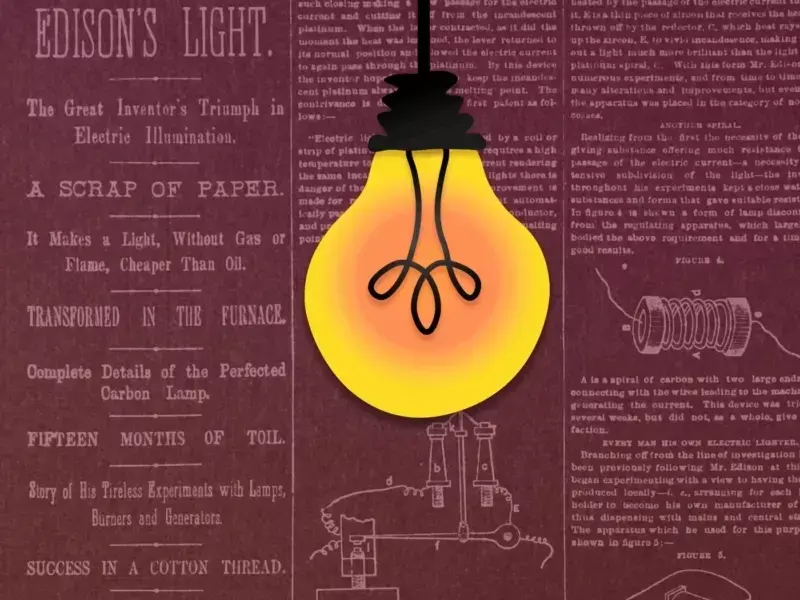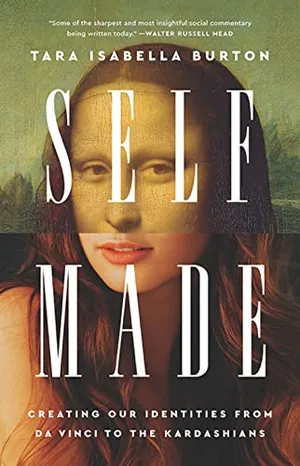How Thomas Edison Tricked the Press Into Believing He’d Invented the Light Bulb
A year before he developed a working bulb, the “Wizard of Menlo Park” created the illusion that his prototype burned for more than a few minutes at a time

In the autumn of 1878, Thomas Alva Edison had a problem. He hadn’t invented the light bulb—yet. Or, to put it more precisely, he had invented a light bulb, but he couldn’t keep it lit for more than a few minutes at a time. He still hadn’t figured out how to regulate the temperature of the light bulb’s internal filament, meaning the incandescent bulb would immediately overheat, and the filament would promptly melt down.
Unfortunately, Edison was running out of time. All over North America and Europe, inventors like him were working on—and patenting—their own electric projects. Sooner or later, somebody would wind up harnessing electricity. The English chemist Joseph Swan, Edison knew, was hard at work on a rival light bulb. Two Canadians, Henry Woodward and Mathew Evans, had already patented an inefficient design four years before.
But that fall, Edison had an even more pressing deadline to face: The journalists were coming. In September, he’d assured the popular press that his latest invention, the incandescent light bulb, was complete. “I have it now,” he told the New York Sun, boasting that “everybody will wonder why they have never thought of it, it is so simple.”
Self-Made: Creating Our Identities From da Vinci to the Kardashians
An exploration into the curation of the self in Western civilization from Leonardo da Vinci to Kim Kardashian
He’d already made his sales pitch: “When the brilliancy and cheapness of the lights are made known to the public” (which would, he promised the Sun, be in just “a few weeks”), America would undergo another scientific revolution. “Illumination by carbureted hydrogen gas”—the inefficient, expensive and often dangerous gas lamps common on American streets and in American homes—would be “discarded.” In its place, electricity would rise to the fore.
Electricity, to the Gilded Age mind, wasn’t just a technology. Rather, it was a mysterious, thrilling, invisible, quasi-magical force that had become synonymous with scientific discovery and the whole arc of human progress. It was, as one guidebook put it, that “subtle and vivifying current,” the source not just of light but of life itself. “Comply with electricity’s conditions,” another writer marveled, “then but turn a key, and the servant of all life will be present in light and power.”
If electricity was magic, then Edison was its chief magician, at least according to the press. He was the “Wizard of Menlo Park,” a reference to his New Jersey laboratory, as well the “Napoleon of Science,” the “Genius of Menlo Park” and the “New Jersey Columbus.” He was almost certainly America’s greatest inventor. But he was also one of the country’s canniest self-promoters, forging close personal relationships with journalists who could be trusted to write adoring, if not always strictly accurate, copy.
Just one year prior, Edison had invented the phonograph to great fanfare. Restless, he’d at once promised reporters that he would “produce something at least as good as the phonograph every year,” Scribner’s Monthly wrote. The papers—their circulation boosted by scores of fans clamoring to find out what their favorite wizard would be up to next—had bolstered that narrative.
/https://tf-cmsv2-smithsonianmag-media.s3.amazonaws.com/filer_public/4b/5f/4b5f4b75-6254-4d41-9b6d-265e6e913897/portrait_of_thomas_edison_bd5f671635dc42d9a5db11e80267a1f4.jpg)
The time for the promised demonstration drew closer. Already, rumors of the impending revelation had caused something of a financial crisis in London, as gas shares plummeted in anticipation of Edison’s latest success. One of the inventor’s associates, George Gouraud, urged him to form a British-based electricity company as soon as possible, the better to capitalize upon the “universal free advertising” the Sun, the New York Herald, and other papers had given him, “such as cannot be bought for money under any circumstances.”
Edison’s invention may not have been ready yet, but Edison certainly was. The inventor, as ever, had a plan. In November, he informed journalists that they would each receive a brief, private demonstration of the new light bulb’s capacities at his Menlo Park laboratory. They could marvel at what Edison had achieved before he swiftly ushered them away, ensuring they’d be out of the room long before the bulb burned out. Edison’s reputation as a cunning genius would remain intact.
The plan worked. The press, credulous as ever, rhapsodized about the light: “clear, cold and beautiful.” In contrast to the famously harsh electric arc lights, the most common available electric light at the time, “there was nothing irritating to the eye.” Instead, the newspapers marveled, “you could trace the veins in your hands and the spots and lines upon your fingernails by its brightness.” The press pronounced the invention “perfect.” Edison, for his part, kept the charade up nicely, telling another visiting journalist that the bulb on display would burn “forever, almost.”
/https://tf-cmsv2-smithsonianmag-media.s3.amazonaws.com/filer_public/6c/6f/6c6ff002-a7b0-45cf-88cf-dbe6e0e09064/edisons_menlo_park_lab.jpeg)
In the end, of course, Edison worked out the kinks of what would become one of the 19th century’s most emblematic inventions. On New Year’s Eve in 1879—a little over a year after the press demonstration—Edison hosted another, larger public display, this time with a bulb that didn’t burn out. (The secret was carbon filament, as Edison had discovered in October of that year.)
By then, Edison’s displays and his claims of ever more awe-inspiring intellectual glory had become regular fixtures of the news cycle. As one exasperated newspaperman groaned, “There is no reason why [Edison] should not for the next 20 years completely solve the problem of the electric light twice a year without in any way interfering with its interest or novelty.” The inventor’s gamble, blending genuine technological innovation with a couple of white lies and a cozy relationship with the press, had paid off. He had harnessed not only electricity but also another invisible power: celebrity.
Edison understood that success in the Gilded Age was a matter of hard work and carefully managing public expectations. Sure, he had come up with the phonograph, but when asked by some guests which historical figure’s voice he’d most like to hear, he shocked them by naming onetime French political upstart Napoleon. As he explained to his audience, who had apparently expected him to name Jesus Christ, “I like a hustler.”
Excerpted from Self-Made: Creating Our Identities From da Vinci to the Kardashians by Tara Isabella Burton. Published by PublicAffairs. Copyright © 2023. All rights reserved.
A Note to our Readers
Smithsonian magazine participates in affiliate link advertising programs. If you purchase an item through these links, we receive a commission.
/https://tf-cmsv2-smithsonianmag-media.s3.amazonaws.com/accounts/headshot/tara2.png)

/https://tf-cmsv2-smithsonianmag-media.s3.amazonaws.com/accounts/headshot/tara2.png)